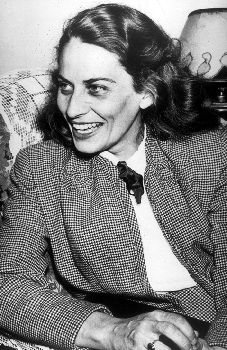Gabrielle Roy Biography and Works
Gabrielle Roy Biography and Works-What is Gabrielle Roy famous for?,Where did Gabrielle Roy live?,Gabrielle Roy, an esteemed Canadian author, holds a distinguished place in the annals of Canadian literature for her profound contributions. Born on March 22, 1909, in Saint-Boniface, Manitoba, Roy’s upbringing in a bilingual and culturally diverse environment significantly shaped her literary journey. Over several decades, her works garnered both national and international acclaim, weaving narratives deeply rooted in personal experiences. This comprehensive biography delves into the life, literary trajectory, and lasting legacy of Gabrielle Roy.Gabrielle Roy Biography and Works
Early Life and Education:
Gabrielle Roy, the youngest of eleven children, hailed from a close-knit French-Canadian family in Saint-Boniface. Her father, Léon Roy, worked in a sawmill, while her mother, Melina Landry, was a homemaker. The multicultural ambiance of Saint-Boniface, a predominantly French-speaking community in Manitoba, provided Roy with a strong connection to her cultural roots.Gabrielle Roy Biography and Works
Roy’s formative years included early education in the local Catholic school, where her academic prowess flourished. Her nascent love for literature and storytelling took root during this period, laying the foundation for her future literary endeavors. After completing teacher training at the Winnipeg Normal School, Roy embarked on a teaching career, an experience that would later influence her perspectives on education and inform the themes of her novels.
Teaching Career:
Roy initially taught in various rural schools in Manitoba, gaining firsthand insights into the challenges faced by both students and educators. This period of diverse experiences profoundly impacted her, becoming an integral aspect of her literary voice. Roy’s genuine interest in the lives of her students and her commitment to education shone through, becoming crucial elements in her storytelling.Gabrielle Roy Biography and Works
Move to Saint-Boniface and Writing Debut:
In 1937, Roy returned to Saint-Boniface and worked as a librarian, a pivotal juncture where she began to immerse herself in writing. Her debut novel, Bonheur d’occasion (The Tin Flute), published in 1945, catapulted her into the literary spotlight. Set in working-class Montreal during World War II, the novel explored the struggles and aspirations of a young family, providing a vivid portrayal of the socio-economic challenges of the time. The Tin Flute earned widespread acclaim for its authentic characters and compassionate exploration of social issues.
Recognition and Literary Success:
Roy’s debut novel earned her the prestigious Governor General’s Award for Fiction in 1947, marking the beginning of a series of accolades for her literary contributions. The novel also gained international recognition, receiving the Femina Prize in France. Roy’s ability to capture the human experience with empathy and authenticity established her as a significant voice in Canadian literature.
Also Read-
- George Bernard Shaw Short biography
- Who is Henry Fielding short biography
- Eunice de Souza Biography and Work
Mature Works and Themes:
Subsequent novels, including Alexandre Chenevert (1954) and Rue Deschambault (1955), showcased Roy’s evolving narrative style and thematic depth. Her exploration of the complexities of human relationships, the impact of societal changes, and the resilience of the human spirit resonated with readers. Roy’s keen observations of everyday life, coupled with her compassionate storytelling, solidified her reputation as a literary luminary.
In Rue Deschambault, Roy revisited the community of her childhood, drawing inspiration from her own experiences. The novel delved into the lives of the Deschambault family, capturing the nuances of familial relationships against the backdrop of a changing society. Roy’s ability to weave intricate narratives while addressing broader social issues became a hallmark of her mature works.
Return to Academia:
In 1957, Roy took a hiatus from her literary pursuits and returned to academia. Accepting a position as a writer-in-residence at the University of British Columbia, she engaged with aspiring writers and further honed her craft. Roy’s commitment to nurturing the next generation of Canadian writers underscored her belief in the transformative power of education and literature.Gabrielle Roy Biography and Works
Later Life and Literary Honors:
As Roy entered the 1960s and 1970s, she continued to produce notable works, including La Montagne secrete (1961) and La Route d’Altamont (1966). These novels further demonstrated her literary prowess and the enduring relevance of her thematic explorations. In 1967, Gabrielle Roy received the Companion of the Order of Canada, a prestigious recognition of her significant contributions to Canadian literature and culture.
Final Years and Legacy:
Gabrielle Roy’s later years were marked by a return to her roots in Saint-Boniface. She lived in her childhood home, Maison Gabrielle-Roy, which has since become a National Historic Site and a cultural center dedicated to promoting her legacy. The author’s final novel, Cap Bonhomme, was published in 1978, offering readers a poignant reflection on aging and the passage of time.
Gabrielle Roy passed away on July 13, 1983, leaving behind a literary legacy that continues to resonate with readers. Her impact on Canadian literature is profound, and her works remain essential components of the country’s literary canon. The themes of compassion, resilience, and the human condition explored in Roy’s novels continue to inspire generations of readers and writers alike.
Legacy and Commemoration:
Gabrielle Roy’s legacy extends beyond her written works. Maison Gabrielle-Roy, her childhood home in Saint-Boniface, has been preserved as a cultural center and museum dedicated to her life and contributions to literature. The Gabrielle Roy Prize, established in her honor, recognizes outstanding Canadian works of fiction in both English and French. Her impact on literature, education, and the cultural fabric of Canada endures, making her a revered figure in the country’s literary history.Gabrielle Roy Biography and Works
- Bonheur d’occasion (The Tin Flute) – 1945: Gabrielle Roy’s debut novel, Bonheur d’occasion, published in English as The Tin Flute, stands as one of her most renowned and celebrated works. Set in working-class Montreal during World War II, the novel intricately follows the Lacasse family as they navigate the challenges of poverty, war, and personal aspirations. Recognized with the Governor General’s Award for Fiction in 1947 and the prestigious French literary honor, the Femina Prize, this novel solidified Roy’s position as a prominent literary figure.
- Alexandre Chenevert – 1954: Alexandre Chenevert delves into the internal world of the titular character, a sensitive and introspective man employed as a clerk in a Montreal office. The novel offers a nuanced portrayal of Alexandre’s thoughts, dreams, and struggles, showcasing Roy’s ability to capture the complexity of individual lives and the impact of societal expectations.
- Rue Deschambault – 1955: This semi-autobiographical novel revisits the community of Roy’s childhood in Saint-Boniface. Rue Deschambault intricately weaves together the lives of the Deschambault family, exploring familial relationships and the cultural dynamics of a changing society. Celebrated for its vivid depiction of personal experiences and the community that influenced Roy, this work provides a poignant reflection on the author’s roots.Gabrielle Roy Biography and Works
- La Montagne secrete – 1961: Also known as The Hidden Mountain in English, this novel explores the lives of two sisters, Gabrielle and Marguerite, growing up in the fictional town of Saint-Hilaire. Against the backdrop of the Manitoba landscape, the narrative captures the natural beauty and challenges faced by the characters. Themes of sibling relationships and the impact of surroundings are central to this work.
- La Route d’Altamont – 1966: In La Route d’Altamont, Roy draws inspiration from her personal experiences to narrate the journey of Joan, a young woman from the French-Canadian prairies to the city. The novel reflects on identity, self-discovery, and the contrasts between rural and urban life. Roy’s keen observations and empathetic storytelling are evident in this exploration of personal and cultural transformations.
- Cap Bonhomme – 1978: Gabrielle Roy’s final novel, Cap Bonhomme, published in 1978, offers a contemplative exploration of aging, memory, and the passage of time. The novel poignantly reflects on the challenges and reflections that accompany the process of growing older, providing readers with a profound and fitting conclusion to Roy’s illustrious literary career.

















